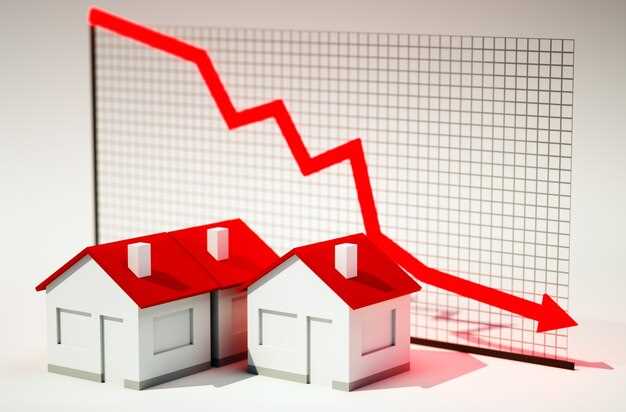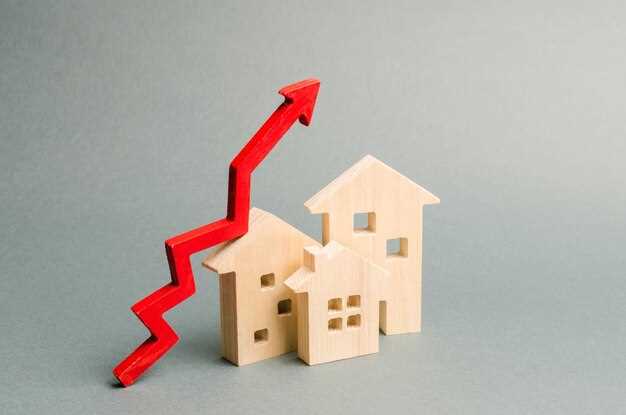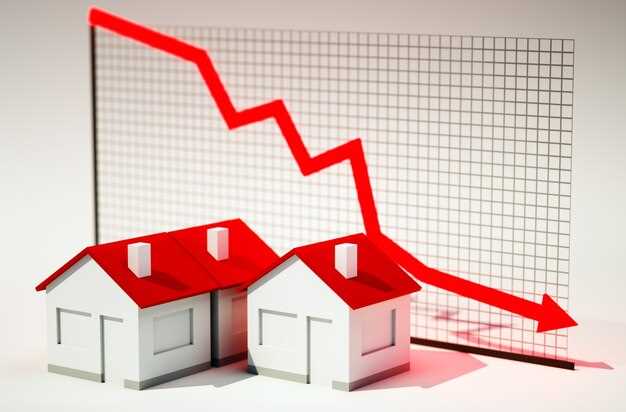Invest in smaller urban centers, as they present the best potential for price growth in Q3 2025. Changing work habits and inflation pressures have pushed demand away from traditional housing giants. Cities like Raleigh, Austin, and Boise are seeing an influx of new homebuyers, leading to competitive market conditions.
Price moderation is on the horizon, providing a window of opportunity for investors. After years of aggressive price hikes, home values are stabilizing, partly due to increased mortgage rates. Buyers should anticipate more choices without engaging in the extreme bidding battles seen in the past.
Those already owning property should focus on risk management. The threat of natural disasters, heightened by climate change, underscores the importance of comprehensive insurance coverage. Tragedies like the recent wildfires in western states reveal significant vulnerabilities, urging property owners to act promptly in safeguarding their investments.
Forecasting Housing Prices for Q3 2025

Anticipate a steady increase in housing prices in Q3 2025, driven by limited supply and sustained demand. Based on current data, expect average price growth of 3% to 5% year-over-year in major metropolitan areas. Focus your attention on the following trends and factors that significantly impact these forecasts:
- Interest Rates: With central banks potentially maintaining lower interest rates, borrowers will find mortgages more accessible, boosting purchasing power and fostering price increases.
- Urban Demand: Demand in urban hubs remains robust due to employment opportunities and lifestyle preferences, contributing to competitive pricing.
- Supply Constraints: Construction delays and ongoing regulatory challenges in permitting new developments result in slower stock growth, maintaining upward pressure on prices.
- Migration Patterns: Shifts in demographic trends, influenced by remote work flexibility, encourage relocations to suburban and secondary markets, which could moderate price surges in certain areas.
Investors and buyers should be mindful of regional disparities. While coastal cities might witness notable price escalations, some Midwestern towns could experience stability or modest gains. Utilize this data to refine investment strategies, ensuring an adaptive approach to fluctuating market conditions. Stay informed on local economic policies, infrastructure projects, and technological advancements as they can unexpectedly alter market dynamics.
Regional Price Trends: Are Some Areas Outperforming?

Investors should focus on metropolitan areas like Austin, Texas, where property prices continue to rise consistently, driven by tech sector growth and a steady influx of newcomers. Proximity to Silicon Valley is also boosting San Jose’s market, as companies decentralize offices leading to increased demand and appreciation rates. In contrast, rural areas in the Midwest are seeing slower growth, proving less attractive for immediate returns.
Prospective buyers should consider Denver, Colorado, which enjoys a robust employment market and expanding infrastructure, predicting further upticks in property values. Comparing this with cities like Detroit, Michigan, where overvaluation issues are surfacing, highlights regional disparities. By aligning investments with growth hot-spots, investors can leverage market disparities for better ROI.
While coastal cities like Miami are experiencing a rebound due to international buyers, drought resistance increases Phoenix’s appeal, especially for long-term sustainability. Real estate in these regions presents opportunities for portfolio diversification. However, fluctuating mortgage rates necessitate a careful evaluation of financial strategies tailored to regional forecasts. Buyers focusing on these outperforming areas can secure advantageous positions within the evolving housing landscape.
Impact of Interest Rates on Housing Affordability
To improve housing affordability, prioritize monitoring interest rates closely. A 1% increase in interest rates can significantly impact monthly mortgage payments, often deterring potential buyers. Analyze current trends to identify opportunities for locking in lower rates. For instance, when rates show signs of volatility, securing a fixed-rate mortgage can stabilize future expenses.
Consider a scenario where the interest rate increases from 3% to 4%. On a $300,000 mortgage, this shift raises the monthly payment from approximately $1,265 to $1,432, considerably affecting household budgets. Understanding these dynamics helps buyers make informed decisions about the timing of their home purchase.
| Interest Rate (%) | Monthly Payment ($) |
|---|---|
| 3.0 | 1,265 |
| 3.5 | 1,347 |
| 4.0 | 1,432 |
To mitigate risks, explore programs offering rate reductions for qualifying buyers, such as first-time homebuyer incentives. Evaluate advantages of opting for adjustable-rate mortgages (ARMs) if planning short-term ownership, allowing lower initial payments with caution towards potential increases. Collaborating with knowledgeable mortgage advisors can unveil strategies to optimize purchasing power, ensuring financial stability and maximizing investment value in variable economic conditions.
Supply Chain Issues: Could They Affect New Constructions?
Prepare for potential delays in new constructions due to supply chain issues. Recent disruptions show a 20% worldwide increase in construction costs since 2021, with materials like lumber, steel, and cement being particularly affected. Builders should actively seek alternative suppliers and bulk-order essential materials ahead of time to minimize impact.
Strong relationships with local suppliers can offer an advantage, as global shipping disruptions account for a significant percentage of delays. By sourcing locally, construction companies may also reduce transportation costs and improve project timelines. Investing in inventory management software can aid in tracking material availability and pricing trends, allowing for informed purchasing decisions.
Considering the volatile nature of global supply chains, construction firms might benefit from revisiting contracts with flexible terms for price adjustments. This could safeguard against unforeseen cost surges. Additionally, exploring substitute materials without compromising safety and effectiveness can offer viable pathways to maintaining project schedules.
Training project managers in risk management is critical, ensuring proactive measures are in place for potential supply interruptions. By being resilient, firms can mitigate adverse effects on new constructions, maintaining customer confidence and sustaining business growth despite existing challenges.
Consumer Behavior: Are Buyers Hesitating?
Buyers, driven by economic uncertainties and high property prices, display clear signs of hesitation. Recent surveys indicate that up to 40% of potential purchasers prefer postponing their acquisitions, primarily due to rising interest rates and fluctuating job markets. As these factors impose pressure on disposable incomes, families reconsider high financial commitments.
Experts recommend buyers to evaluate their financial stability diligently, emphasizing the benefits of securing fixed-rate mortgages to mitigate risks in fluctuating interest environments. Affordability ranks as a top concern, urging buyers to focus on properties within or below budget constraints, avoiding potential long-term debt traps.
With sustainability gaining traction, eco-friendly homes attract cautious buyers, offering lower utility costs and compliance with anticipated regulations. Property developers should prioritize energy-efficient designs to capitalize on this trend, reassuring eco-conscious buyers wary of future unexpected expenses.
Market watchers suggest that renters, witnessing increased rental prices, may reconsider purchasing as a viable alternative. Incentives from local governments, such as tax credits for first-time buyers, could effectively stimulate hesitant buyers into action.
While some choose caution now, strategic planning and aligned financial practices present avenues for transformation from potential buyers to homeowners. This shift offers opportunities for industry stakeholders to adjust their strategies, meeting buyer needs amidst prevailing economic dynamics.
Assessing Risks in the Housing Market

Prioritize investing in real estate markets with strong economic fundamentals. Select locations where employment growth is robust, and infrastructure developments are underway. These indicators often signal potential for property appreciation and rental demand.
Monitor interest rate trends closely. Rising rates can increase borrowing costs, reducing affordability and cooling housing demand. Investors should consider the impact of their timing on long-term financial plans and explore fixed-rate mortgage options to mitigate future risks.
- Analyze demographic shifts: Pay attention to migration patterns and population growth in urban centers, which can drive demand and affect pricing dynamics.
- Evaluate local government policies: Changes in zoning laws, property taxes, and housing incentives can directly influence market conditions. Being informed helps in making strategic decisions.
- Consider environmental factors: Assess the vulnerability of an area to natural disasters such as floods or earthquakes. Properties in high-risk zones may require additional insurance, impacting overall investment returns.
- Stay alert to global economic conditions: Global events, such as trade tensions or pandemics, can influence housing markets. Diversify property portfolios to counteract broader economic risks.
Engage with real estate professionals for insights and market analysis. Their expertise can provide valuable information about upcoming neighborhoods and undervalued properties, aiding in the identification of promising investment areas.
Incorporate cybersecurity measures if investing in digital property platforms. Data breaches can compromise financial transactions and personal information, emphasizing the need for robust security protocols.
Rounding out your strategy, maintain a flexible approach to adapt to new trends and shifts in consumer preferences. This agility ensures sustained growth and stability in your real estate investments.
Potential Impact of Inflation on Buying Power
Consider fixing mortgage rates now to safeguard against further inflation-driven interest rate hikes. Inflation erodes purchasing power, making real estate acquisitions more expensive. When consumer prices rise by 3%, but your income remains unchanged, your ability to afford housing declines significantly. Taking pre-emptive action by locking in current low rates can prevent future financial strain.
Analyze your expenses carefully. Adjust budgets to accommodate rising costs of living, which inevitably affect housing affordability. Consistent expense reviews ensure you’re not caught off guard by inflated prices over time.
Choose properties with strong rental appeal. Inflation often increases rental demand, providing an opportunity for savvy investors to secure lucrative rental yields. Properties in thriving economic zones tend to maintain value and offer better returns.
Regularly review financial goals. Inflation can rapidly alter the real estate market landscape. Stay informed about trends and recalibrate your investment strategy to keep pace with economic shifts, ensuring long-term financial health.
Invest in energy-efficient homes. As utility costs rise alongside inflation, reducing energy consumption can mitigate these effects, preserving your overall budget and enhancing property appeal.
Regulatory Changes: How New Policies Could Shift the Market
Focus on understanding local zoning reforms cemented in place for Q3 2025, as they aim to increase available housing stock. Municipalities that permit higher-density projects could unlock valuable opportunities for developers eager to fill new quotas. Engage with city planners to ensure projects align with updated guidelines, minimizing bureaucratic hurdles.
Stay attuned to adjustments in mortgage lending rules that could affect eligibility criteria and interest rates. An anticipated rise in governmental incentives for first-time buyers may demand a revision in investment strategies, particularly in urban areas where younger demographics drive demand. Networking with mortgage advisors will provide insights into how overlapping policies might boost or dampen buyer enthusiasm.
Environmental regulations focusing on sustainable construction practices are tightening. Developers should incorporate eco-friendly materials and renewable energy sources early in the planning stage. Tax credits for green buildings are expected to expand, providing financial benefits while meeting policy requirements. Collaborating with consultants specializing in green compliance can streamline certification processes, ensuring projects gain traction swiftly.
Monitor international trade policies impacting material costs, especially from countries supplying key construction inputs. Shifts could lead to price increases, affecting project budgets and timelines. Adopting flexible sourcing strategies will mitigate potential disruptions, ensuring development remains on track and within budget.
Evaluate property tax revisions closely, as they may alter investment returns significantly. New assessments could redefine prime locations, encouraging investors to re-assess portfolios. Collaboration with local tax professionals will aid in navigating the nuances of regional shifts, optimizing financial outcomes.
Economic Indicators: What They Signal for the Housing Sector
Monitor employment rates closely; a strong job market often boosts housing demand as more individuals gain the financial stability needed to purchase homes. The Bureau of Labor Statistics projects a steady increase in employment with a notable decrease in unemployment rates to 3.5% by mid-2025, signaling a promising environment for potential homebuyers.
Watch interest rates set by the Federal Reserve. Recent trends suggest a gradual rise, currently anticipated to reach 4% by the end of 2025. This slight increase may dampen housing affordability, urging prospective buyers to act sooner rather than later to lock in lower rates.
Analyze consumer confidence indices, as they reflect buyers’ willingness to invest in real estate. With the Consumer Confidence Index hovering around 110 points, a clear indication of robust purchaser optimism emerges, promising sustained activity in the housing market.
Observe housing starts and building permits data from the U.S. Census Bureau. An increase in these figures, projected to exceed 1.6 million units annually, indicates developer confidence, suggesting a future uptick in housing supply, which could stabilize prices.
Stay alert to wage growth, expected to climb by an average of 3.2% annually. This increase often aligns with higher buying power, potentially driving up housing demand as consumers seek to upgrade their living arrangements.
Keep an eye on inflation rates, anticipated to stabilize around 2% by late 2025. Controlled inflation signifies more predictable living costs, contributing to buyer confidence and sustained investment in real estate.
Pay attention to the national GDP growth rate, forecasted to expand by about 2.5% annually. This growth conveys a healthy economy, usually correlating with increased investment in housing. Potential investors should find this data reassuring as they assess their next move in the property market.
Real Estate Investment Risks in an Uncertain Economy
Diversify your portfolio to mitigate risks associated with economic volatility. In uncertain times, holding a varied range of property types, such as residential, commercial, and industrial, can provide a buffer against sector-specific downturns. Historical data shows that diversified portfolios are less exposed to individual market fluctuations, reducing overall risk.
Stay informed about interest rate trends, as rate changes can dramatically affect investment returns. When rates rise, borrowing costs increase, impacting profitability for leveraged investments. Regularly assess your debt structure and consider locking in favorable rates to guard against sudden hikes. Look for fixed-rate loans which offer stability in uncertain times.
Evaluate local market conditions carefully. Economic uncertainty doesn’t affect all regions equally; some areas may suffer, while others could thrive. Analyze local employment rates, new business developments, and population growth. These factors can indicate potential for property value appreciation, even when broader economic indicators look bleak.
Conduct thorough due diligence to uncover hidden risks in property investments. Inspect potential properties meticulously and review historical performance data. Doing so can identify red flags early, ensuring that investment decisions are based on solid foundations rather than speculative trends.
Consider the impact of government policies and regulations on your investments. Policy changes, such as tax reforms or zoning laws, can significantly impact profitability. Stay updated on legislative changes that could influence market conditions, and plan for potential repercussions to avoid surprises.
Lastly, maintain ample liquidity to withstand market downturns. An uncertain economy may lead to unexpected challenges, such as needing cash reserves for unexpected expenses or seizing new opportunities. Liquid assets provide flexibility, allowing you to adapt quickly to changing circumstances.
Q&A:

How are housing prices expected to change in Q3 2025 according to the article?
The article projects a moderate increase in housing prices in Q3 2025, driven by a combination of steady demand and limited supply. Although economic factors like interest rates and inflation might put some downward pressure on prices, the overall trend is still expected to be upward as the sector remains resilient to various external influences.
What are the main risks to the housing market mentioned in the article?
Key risks highlighted in the article include potential economic downturns, fluctuations in interest rates, and supply chain disruptions impacting construction materials. These risks could lead to delayed construction projects or reduced investment in real estate. Additionally, unpredictable global events or policy changes could also pose challenges to the housing market stability.
Does the article discuss any specific regions that might see more significant price changes?
Yes, the article points out that urban areas, particularly those with tech-driven economies, might experience more noticeable price hikes due to the ongoing demand for urban living spaces. Meanwhile, some rural areas might not see equivalent growth, as remote working trends allow people to live further away from city centers, potentially reducing demand there.
Are there any demographic trends affecting the housing market according to the article?
The article notes that millennials and Gen Z entering the housing market as first-time buyers are significantly influencing demand. This demographic shift, coupled with an aging baby boomer generation looking to downsize, is reshaping buyer preferences and could lead to increased demand for certain types of properties, like suburban homes and more affordable alternatives.
Is there any mention of government policies impacting the housing market in the article?
The article briefly touches on recent government initiatives aimed at improving housing affordability and increasing supply. Such policies include incentives for first-time buyers and efforts to streamline construction regulations, which could aid in addressing some of the supply side constraints over time, thereby impacting prices and market dynamics.



